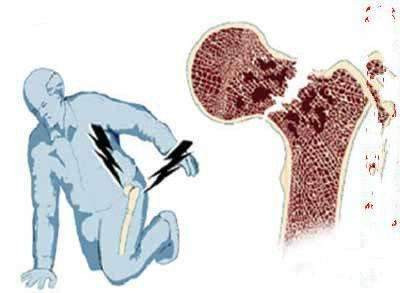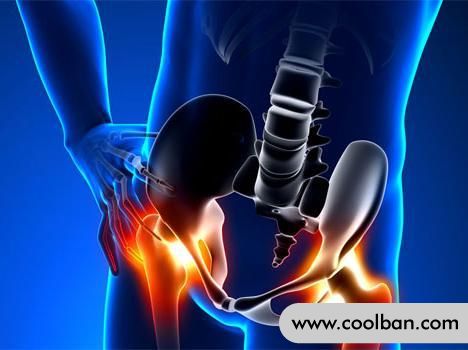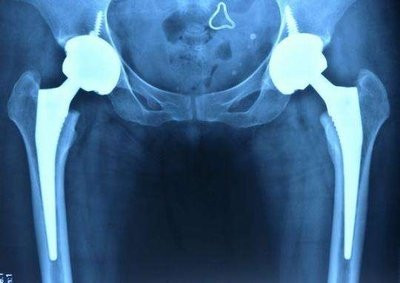How is the femoral head necrotic?
Necrosis of the femoral head is a common disease among young and middle-aged people with a high disability rate. How does this disease occur? How to prevent it? What is the best way of Chinese medicine? is a topic that people often pay attention to.
Necrosis of the femoral head is a common refractory disease in orthopaedics. Due to various factors, the blood vessels of the femoral head are blocked, the blood supply is interrupted, the femoral head collapses and deforms due to avascular necrosis, loses its normal function, and has a high disability rate. More common among young and middle-aged people. At present, the number of patients suffering from this disease in my country has exceeded 10 million, and there are 100,000 to 200,000 new cases every year. Conservative treatment of traditional Chinese medicine is the main method for the treatment of this disease.

First, femoral head necrosis favors Three groups of people
Although there are many causes of necrosis of the femoral head, three groups of people are favored.
The first group of people is patients with a history of hip trauma, such as hip dislocation, acetabular fracture, femoral neck fracture, etc. The fracture also damages the blood vessels supplying the femoral head, causing the blood vessels to twist, rupture and compress, Although the blood supply can be restored after a period of treatment, the damage is difficult to repair. Because the blood supply cannot keep up with the qi stagnation, it leads to avascular necrosis of the femoral head.
The second group of people is regular drinkers. Modern research believes that frequent excessive drinking can damage vascular endothelial cells, promote lipid deposition, and cause local microcirculation disorders. Traditional Chinese medicine believes that alcohol is very hot and poisonous. Long-term alcohol abuse will damage the spleen and stomach, leading to loss of transportation and transformation. The vicious circle of blood stasis with the same disease, necrosis of the femoral head due to phlegm-induced paralysis.
The third group of people is those who take hormones for a long time. Some patients with special skin diseases, rheumatoid arthritis, nephrotic syndrome, etc., need to take hormones regularly, which can cause lipid metabolism disorders in the femoral head, micro-fat plugs in the blood vessels in the bone to block small blood vessels, and femoral head necrosis occurs. . The development of the disease is a relatively slow process, with areas of necrosis gradually appearing, with collapse of the femoral head seen 2 to 3 years after the onset of necrosis.

Second, how to detect femoral head necrosis early
The early clinical manifestations of femoral head necrosis are not obvious, and hip pain is an early symptom. Because the pain is mild and the symptoms are hidden, the patient can still walk and move normally, and even relieved after rest. It is easy to be misdiagnosed. According to statistics, the misdiagnosis rate can be as high as 40.8%.
As the disease progresses, the pain becomes obvious. In addition to the crotch, sometimes the pain at the base of the thigh will also radiate to the inner thigh to the knee joint.
The second is claudication. As the disease progresses, muscle spasm is caused by pain, walking is inflexible, joint movement is limited, and internal and external rotation is limited earlier than flexion limitation. Finally, flexion contracture can be caused, and finally claudication can be caused, which seriously reduces the patient's work and performance Survival skills.
If the femoral head necrosis is mild in the early stage and the X-ray does not show bone changes, an MRI may be performed, which can detect the early changes of edema and ischemic signals, and can also indicate the degree of femoral head necrosis.

Third, Chinese medicine treatment has advantages
Traditional Chinese medicine believes that this disease belongs to the categories of "bone erosion", "bone atrophy" and "bone paralysis". Traditional Chinese medicine is generally divided into 4 common syndrome types: Qi stagnation and blood stasis syndrome, phlegm stasis blocking collaterals, meridian obstruction syndrome, liver Kidney deficiency syndrome can be a single syndrome or two or more complex syndromes.
TCM therapy takes the holistic view as the guiding principle, "prevent disease before disease and prevent disease change", prevent the occurrence of femoral head necrosis for high-risk groups, and early TCM intervention for those diagnosed with femoral head necrosis.
Traditional Chinese medicine treatment is more commonly used oral Chinese medicine under the guidance of syndrome differentiation and treatment. The treatment methods include blood-activating method, kidney-invigorating method, and spleen-invigorating method. The combined application of blood-activating method and kidney-invigorating method is the most common. Reduction, Yishen Jianpi Decoction, etc.
Traditional Chinese medicine treatment can be combined with electromagnetic therapy, braking traction, extracorporeal shock wave and other conservative treatments. At the same time, traditional Chinese medicine treatment can be combined with minimally invasive surgical treatment according to the degree of lesions, such as vascular bundle implantation, arterial perfusion, arthroscopic debridement, core decompression, drilling Bone grafting etc.
Comprehensive treatment of traditional Chinese medicine can promote bone necrosis absorption, relieve pain, and improve hip function. According to statistics, about 70% to 75% of patients treated with traditional Chinese medicine can reverse or no longer develop the disease, thereby improving the quality of life of patients.

